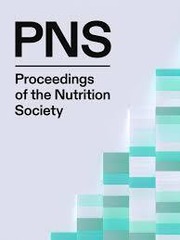It has previously been reported that two diets lower blood pressure (BP): one based on the dietary approaches to stop hypertension (DASH)-type diet, which is high in fruits, vegetables and low-fat dairy foods; a second diet that is low in Na and high in K (LNAHK)(Reference Nowson, Worsley and Margerison1). Moreover, a greater BP reduction was demonstrated to be achieved after consuming the LNAHK compared with the DASH-type diet (DASH). Whether the BP response to either the DASH (OD) or the LNAHK diets is affected by anti-hypertensive medication is not known. The aims of the present study were to determine: (1) if the BP response to DASH and LNAHK differs between those taking anti-hypertensive medications and those not taking anti-hypertensive medication; (2) for those who were taking anti-hypertensive medication, if the BP response differs by anti-hypertensive medication class. Ninety-four subjects, which included twenty-four men and eighteen women taking anti-hypertensive therapy, completed a 12-week study in which, following a 2-week control diet (CD), all subjects followed two dietary regimens (for 4 weeks each) in random order, i.e. DASH, plus either a LNAHK or high-dairy diet with a second 2-week CD period between diets. Home BP was measured daily for the last 2 weeks in each phase(Reference Nowson, Worsley and Margerison1). Anti-hypertensive medication was classified as either renin–angiotensin system blockade (ACE/AT1) or other anti hypertensive therapies (Ca-channel blockers and β-adrenergic blockers). In subjects who were taking anti-hypertensive medication, the OD diet did not significantly lower systolic BP (SBP; mean difference −1.1 (se 0.9) mmHg; P>0.05) relative to the preceding CD phase. The greatest fall in SBP was detected in subjects on the LNAHK diet who were taking anti-hypertensive medication (mean difference −6.2 (se 1.3) mmHg) and this fall was markedly greater than that of diet-matched non-medication users (P=0.036; ANOVA; Figure).

Figure. Change in SBP, by diet type, split by anti-hypertensive medication use.
Compared with the CD, DASH reduced SBP in subjects receiving ACE/AT1 (mean difference −4.2 (se 0.2) mmHg, n 15; P<0.01) but not in those taking other anti-hypertensive therapies (mean difference +0.6 (se 1.2) mmHg, n 27; P>0.05). There was a significant fall in BP in those consuming LNAHK diet and taking ACE/AT1 (mean difference; SBP −9.5 (se 2.4) mmHg; diastolic BP (DBP) −4.1 (se 1.3) mmHg, n 7; P<0.01 and P<0.05 respectively) compared with the CD. For those taking other anti-hypertensive therapies, the LNAHK significantly lowered SBP (mean difference −4.4 (se 1.4) mmHg, n 13; P<0.01) but not DBP (mean difference −2.5 (se 1.3) mmHg; P>0.05) compared with the CD. Implementation of a LNAHK diet may be a useful adjunct treatment in reducing BP, particularly in those taking ACE/AT1 anti-hypertensive medication.



